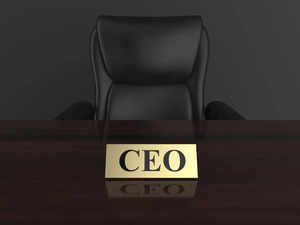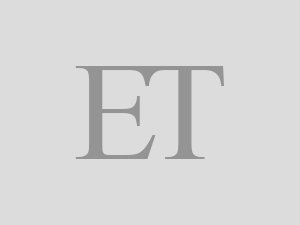 iStock
iStockTop company officials said India Inc is experiencing resurgence in internal leadership hiring, with a focus on providing seasoned professionals with the opportunity to have longer and more fulfilling job tenures. This shift comes after years of intense external hiring and competition-driven poaching efforts.
Leading conglomerates like Aditya Birla Group, Mahindra Group, Vedanta, Larsen & Toubro, RPG Enterprises are increasingly feeding in their CXO or top talent demand with in-house pros, marking a shift in strategy of high reliance on external search.

Building Talent Pipeline
Many are looking to fill as much as 70-80% of senior leadership positions internally compared with about 40-50% internal hiring 5-6 years ago, said the officials.
“There is an increased emphasis to feed leadership positions with in-house talent,” said Anish Shah, Group CEO & MD, Mahindra Group. “With focused initiatives on attracting best talent and nurturing leadership teams within, we aim to provide leaders of tomorrow the right exposure and create a ready pool of high-potential talent to promote.”
“We’re getting to the vision of filling up 80% of the roles internally in the future,”Shah said. “Through Future Shapers – which is the leadership journey for our top management, we’ve been able to achieve a total of 71% rotations. For example, 15 leaders have taken up larger roles in Mahindra Group companies. These leaders went on to be promoted to handle CXO level roles,” he added.
Earlier this year, Mahindra Group appointed Manoj Bhat, former Group CFO, as the MD & CEO of Mahindra Holidays & Resorts, while Amarjyoti Barua, former Executive Vice President - Group Strategy, was appointed Group CFO.
Aditya Birla Group’s Director-HR Ashok Ramchandran said: “We are deeply invested in building our internal talent pipeline, across levels, including for senior management roles.”
“We tend to follow a 70:30 ratio of internal to external for leadership roles. This allows us continuity within a business, diversity from within our conglomerate and outside,” said Ramchandran, one of the top internal moves. He succeeded Santrupt Misra, who held this role till last year.
FACTORS FUELLING TREND
A combination of reasons is leading to this trend including cost advantage, shorter time to hire, cultural fitment, greater acceptance, and talent retention.
“Earlier, whenever growth spurts would come, companies would go externally and hire for leadership roles. However, in the last 3-4 years as many of these large groups have grown at an unprecedented rate, the demand for leaders and war for talent has increased. This is leading to a heavy reliance on building a talent pipeline internally to take on senior roles,” said Sandeep Bhalla, head of consulting business at Korn Ferry India.
Among other top recent moves, Naveen Tahilyani (ex-CEO of Tata AIA Life Insurance) was appointed CEO of Tata Digital; Ravindra Kumar GP (former Tata Motors) joined as CHRO Air India; and Vipul Chandra was appointed as CFO of LTI Mindtree.
One of the key reasons to groom internal talent is significant cost advantage.
“Companies end up paying at least 40% higher to acquire talent from outside – which includes a one-time cost paid to the search firm and salary hike given to the external candidate,” said Bhalla. Developing leaders from within makes a business case for companies, apart from the fact that it is a good brand value proposition & derisk the company, he added.
Most companies are willing to take a bet on internal talent even if they are 60-70% ready.
“If internal talent is 60-70% ready, we grow them into the roles in demand. We have many CEOs, CFOs, COOs and heads of businesses who have assumed their leadership roles through internal talent hunt. Internal talent knows the company better, have seen scale and have exposure to different businesses of the group,” said Madhu Srivastava, CHRO, Vedanta.
Companies typically look for external candidates only when they are looking to hire for niche roles.
“In the last 5-6 years we have increased our intake of internal talent for leadership positions to 70-80% from about 50%,” said Srivastava. “This has been a conscious strategy of the company as the need for leadership talent has also increased given the growth that we are seeing across all our businesses,” she added.
At L&T, about 85% of the senior leaders have been developed internally, said C. Jayakumar, CHRO- L&T Group. “A crucial part of this approach is our job-rotation policy, which ensures that employees gain exposure to diverse roles. This policy not only prepares them for future leadership positions, but also builds a robust pipeline for leadership across existing and new lines of business,” he added.
S. Venkatesh, Group President-HR, RPG Enterprises, said: “If an internal candidateis 70-75% ready, first preference is given to them. Only for certain skill sets where internal candidates may not be available, like new business areas, we look outside for talent,” Nearly 80% of the group’s talent demand is met internally and may increase to 90% in the coming years, he added.
There is also an increasing thrust from boards to derisk organisations and it is a mandate to the HR heads to keep the leadership talent pipeline healthy, said Neelesh Gupta, director, Deloitte India.









 Get Unlimited Access to The Economic Times
Get Unlimited Access to The Economic Times
